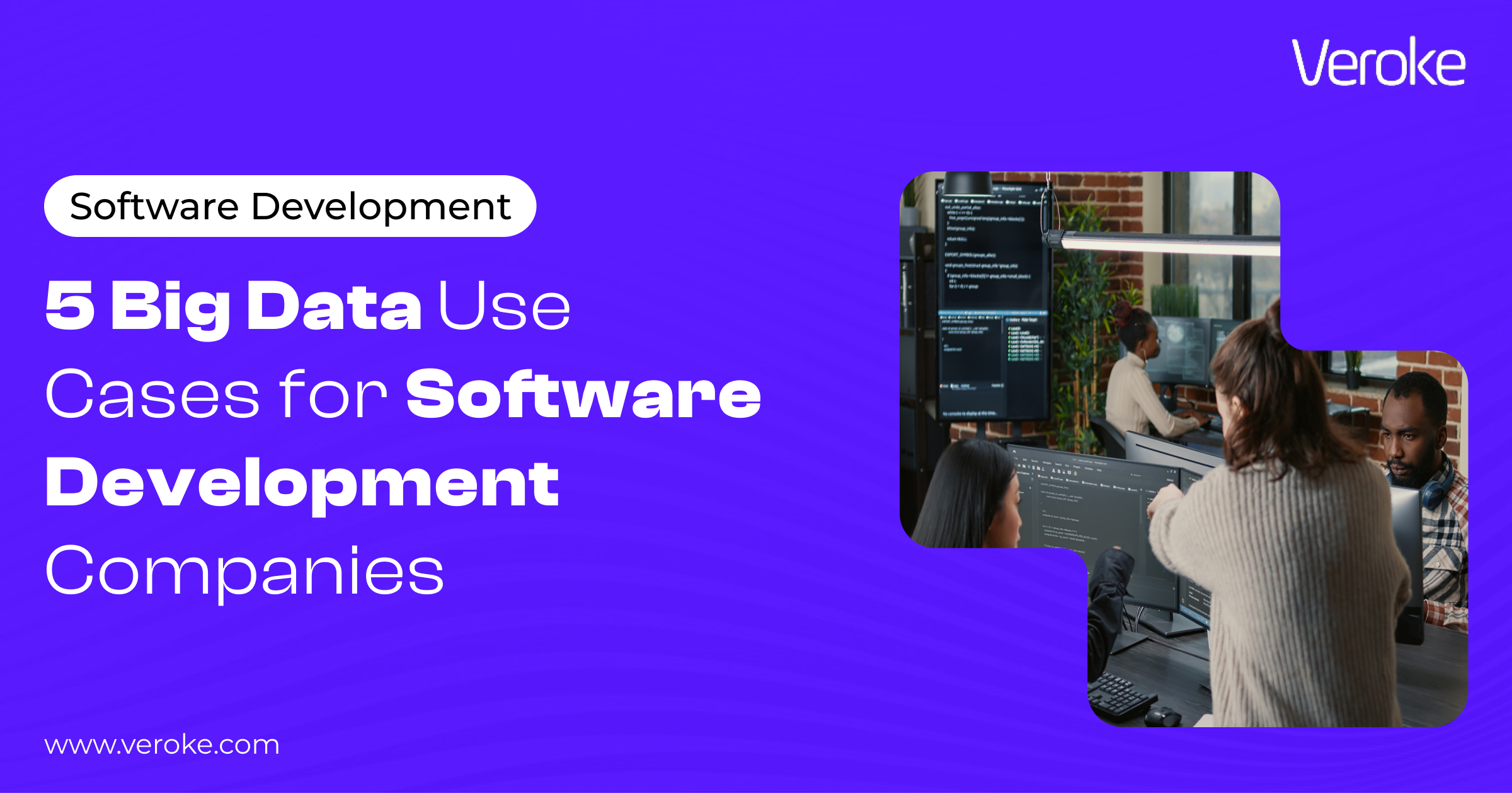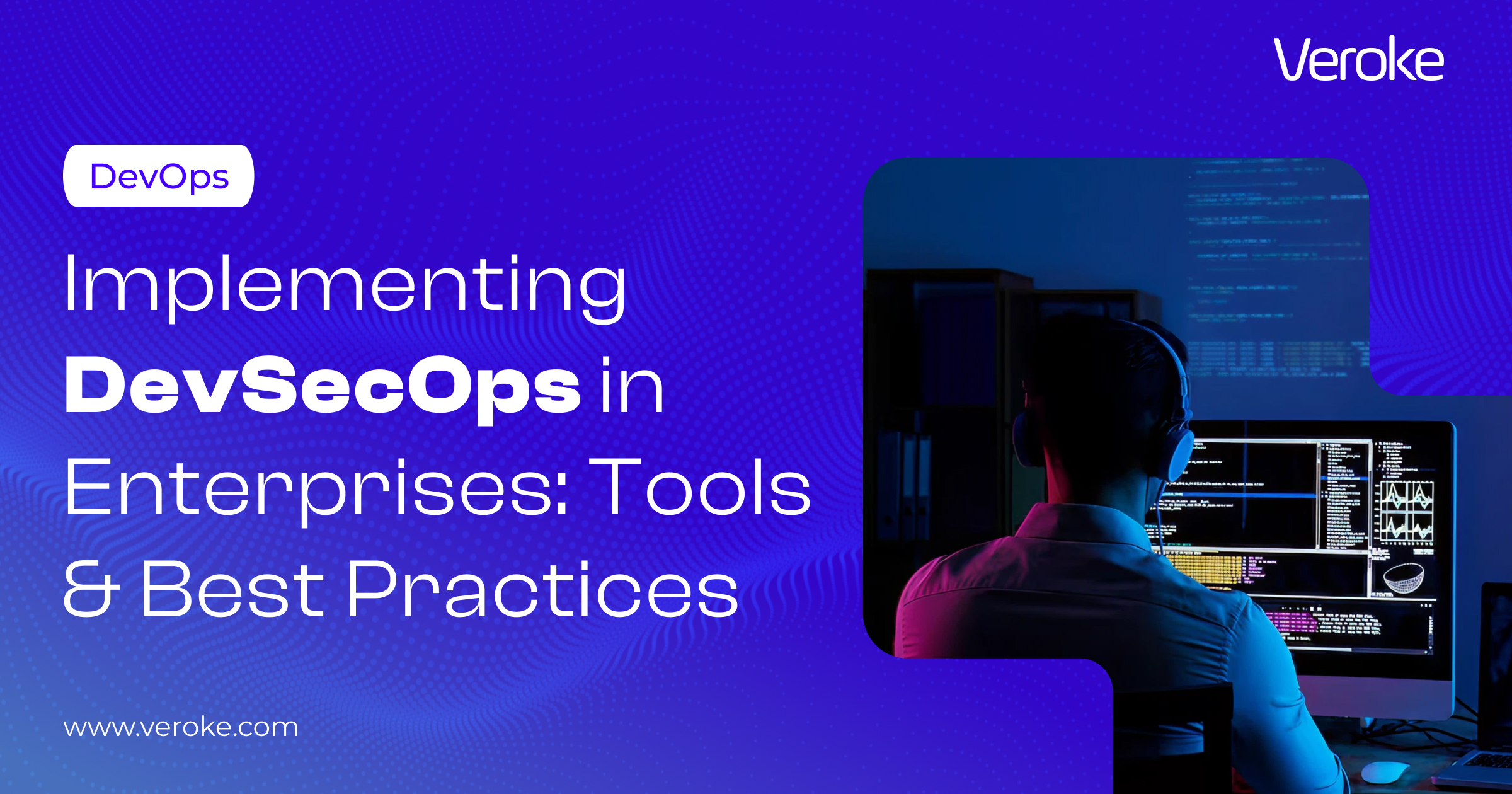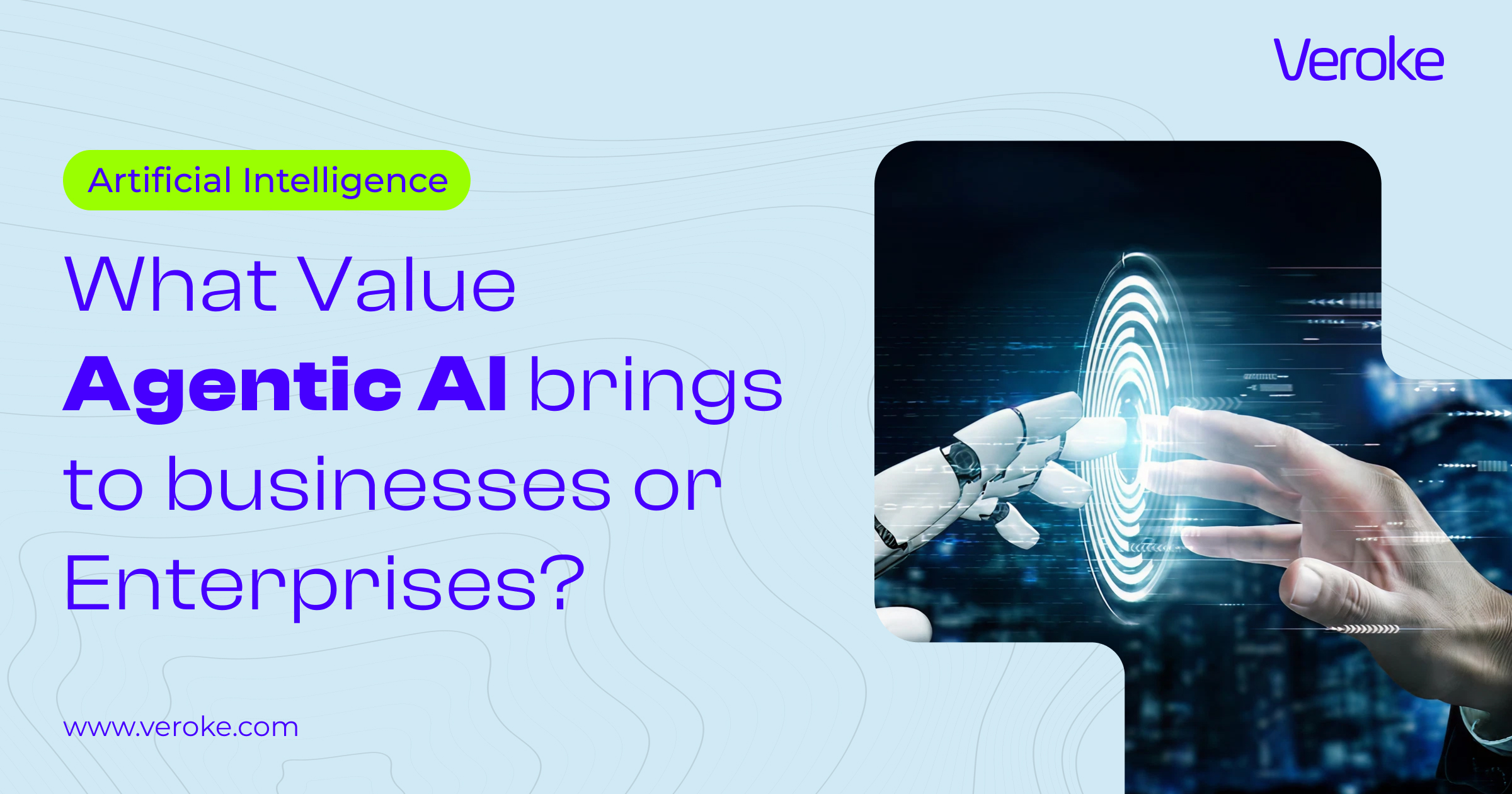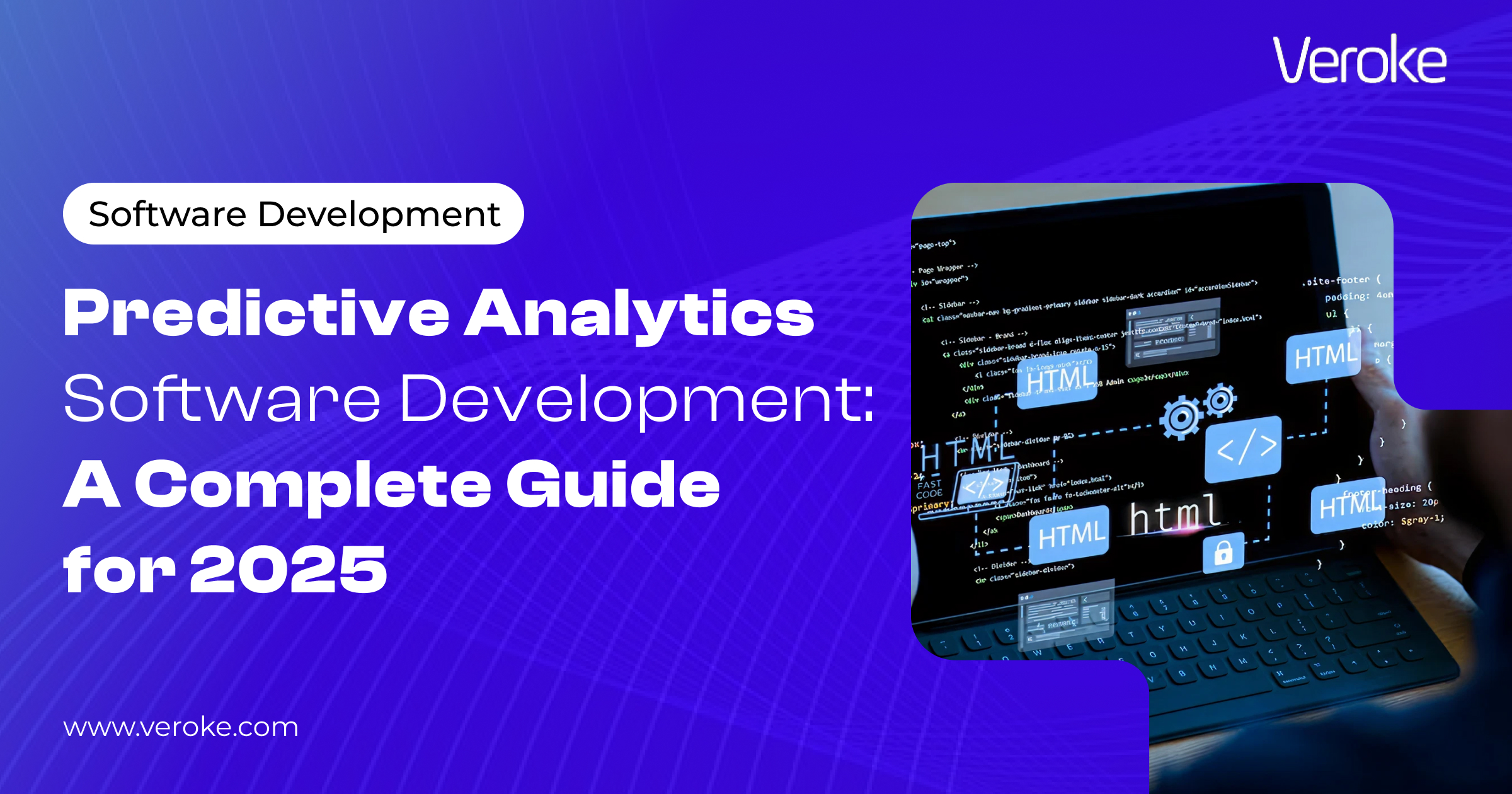Overview
Subscribe to Our Newsletter
Get expert guidance on various topics, resources, and exclusive insights
5 Key Big Data Use Cases for Software Development Companies
You might have heard this a lot: data is the new oil, and this couldn’t be more true in today’s world of software development.
Just as oil powered the Industrial Revolution, Big Data is fueling the Digital Revolution.
For software development companies, tapping into Big Data isn’t optional — it’s a strategic imperative. From personalizing user experiences to automating complex workflows, the ways we collect, analyze, and act on data are fundamentally reshaping how modern applications are built, tested, and scaled.
According to IDC, the global datasphere is projected to swell to 175 zettabytes by 2025, with nearly 30% processed in real time by applications that demand instant insights for seamless experiences.
This surge has unlocked game‑changing opportunities: whether you’re optimizing performance, training AI‑driven features, or predicting system failures before they occur, Big Data has evolved into a core development resource that extends far beyond analytics dashboards.
So, how are forward‑thinking software teams harnessing this data goldmine? In this post, we’ll explore five powerful Big Data use cases in software development and see how they’re changing the game.
What Is Big Data and Why is it Essential for Companies?
Big Data isn’t just about volume, it’s the ability to capture, process, and act on massive, fast‑moving, and diverse datasets that makes it a game‑changer for software teams.
Big Data spans structured, semi‑structured, and unstructured information generated from sources like mobile apps, IoT devices, web server logs, and user interactions. Its power rests on three core dimensions:
╰➤ Volume: Datasets ranging from terabytes to exabytes, expanding exponentially as applications grow.
╰➤ Velocity: Continuous ingestion and processing of data streams in real time (or near real time), enabling instant feedback and dynamic features.
╰➤ Variety: Multiple formats: text, logs, images, metrics, events, each demanding specialized storage and analysis techniques.
To tame this complexity, developers rely on platforms and frameworks such as Apache Hadoop, Spark, and Kafka, alongside cloud‑native services (e.g., AWS Kinesis, GCP Dataflow, Azure Event Hubs)—for scalable storage, distributed processing, and real‑time analytics.
In software engineering, where precision and performance are paramount, Big Data offers a competitive edge by enabling data-driven decisions at every stage of the development cycle.
Why Does Software Development Need Big Data More Than Ever?
Gone are the days when dev teams could rely solely on instinct. With complex architectures, diverse user needs, and constant updates, data is now at the core of agile software delivery.
Big Data helps software teams answer critical questions:
⤷ Which features are being used?
⤷ Where are the performance bottlenecks?
⤷ How can we prevent bugs before they appear?
Big Data provides the answers. It empowers developers and managers to make data-informed decisions, optimize workflows, enhance product performance, and deliver personalized user experiences..
Whether you’re building SaaS products, mobile apps, or enterprise platforms, Big Data helps transform guesswork into strategic, scalable, and smart development.
Understanding the 3 Main Types of Big Data
Big Data drives smarter decisions, personalized experiences, and competitive advantage by turning raw user interactions, market trends, and operational metrics into actionable insights. But data isn’t one‑size‑fits‑all.
Broadly, it falls into three categories, each defined by its structure, format, and analytical use cases:
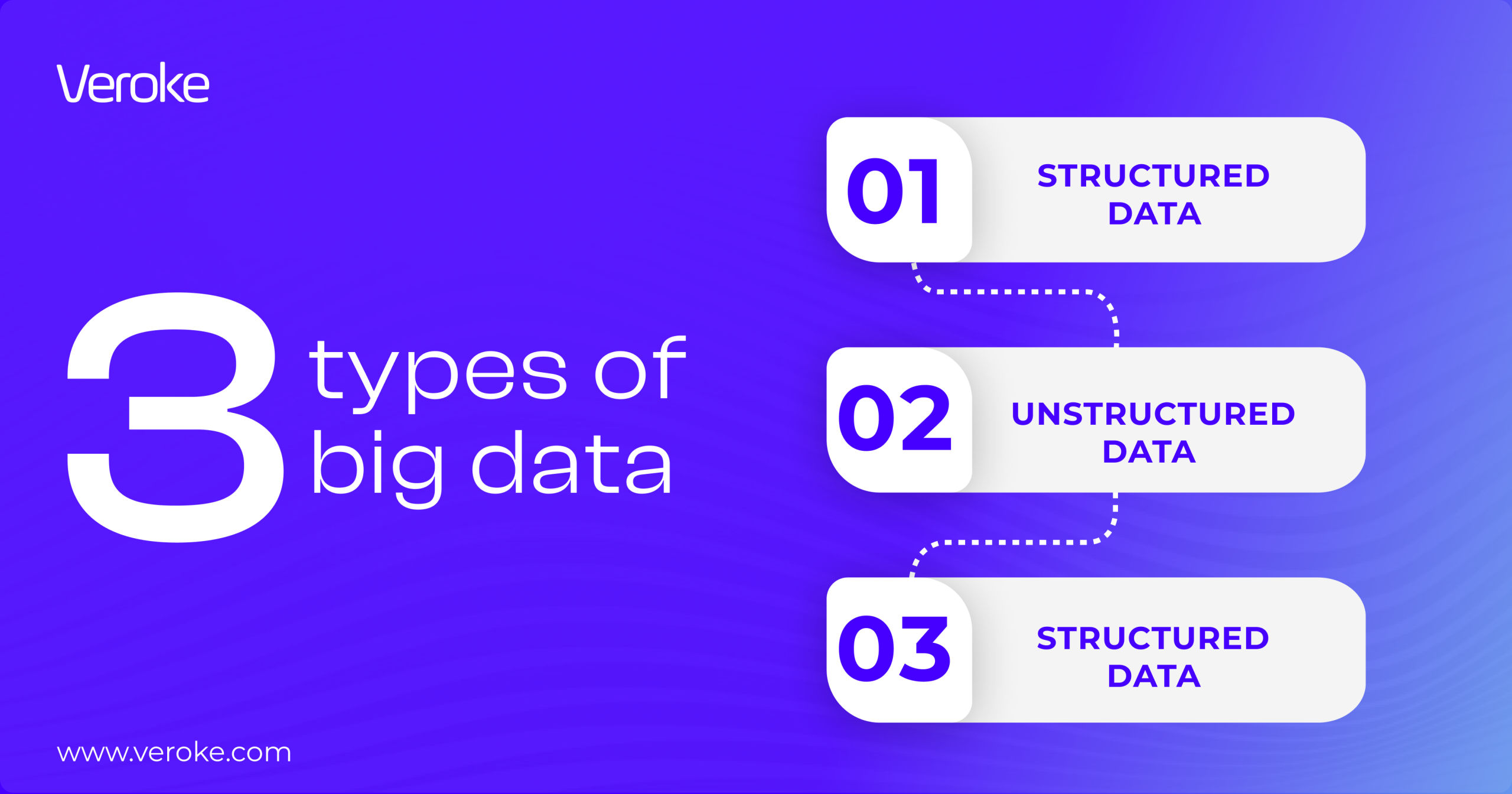
3 Types of Big Data
→ Structured Data
Structured data is highly organized and easily stored in relational databases. It follows a predefined model, typically made up of rows and columns, making it easy to search, filter, and analyze using traditional data tools like SQL.
This is the most straightforward type of data for developers and data analysts to work with.
→ Unstructured Data
Unstructured data lacks a fixed format, making it more complex to process and analyze. Despite its lack of structure, this type of data often contains rich, valuable insights, especially when handled with the right Big Data tools and AI algorithms.
Unstructured data accounts for over 80% of all data generated today, and mining it effectively can unlock powerful opportunities for product improvement and customer engagement.
→ Semi-Structured Data
Semi-structured data falls somewhere in between the other two types. It doesn’t reside in a traditional database format, but it does contain tags, markers, or metadata that make it easier to organize and analyze than purely unstructured data.
Software teams often interact with semi-structured data when dealing with APIs, third-party integrations, or cloud services. Understanding these data types is the first step in building systems that can collect, process, and extract value from them.
5 Powerful Big Data Use Cases in Software Development
Big Data isn’t just for data scientists or analysts locked away in glass-walled departments. It has found its way into the heart of software development, changing the way teams design, build, test, and evolve digital products.
For software development companies, embracing Big Data isn’t a futuristic vision, it’s a strategic advantage in today’s competitive tech landscape.
Let’s take a closer look at five compelling ways Big Data is revolutionizing the software development lifecycle.
1. Smarter Decision-Making with Predictive Analytics
In traditional development workflows, decisions were often based on best guesses, limited feedback, or intuition. Big Data has changed that.
Nowadays, software developers can leverage predictive analytics to make data-driven choices about everything from managing accessibility in UX/UI design to backend logic.
By analyzing vast sets of user interaction data, usage trends, and system logs, predictive models can anticipate user needs, identify potential issues, and even suggest the next feature to build.
This foresight streamlines development cycles, reduces wasted effort, and keeps teams laser-focused on what truly matters to users.
We can take the example of platforms like Netflix that use predictive analytics not only for content recommendations but also to fine-tune streaming performance based on predicted user demand in different regions.
2. Proactive Error Detection and Debugging
Every developer knows the pain of debugging, especially when issues appear in production. Big Data makes this process smarter and faster.
Instead of relying solely on manual logs or reactive testing, developers can now tap into real-time data pipelines that monitor millions of transactions, logs, and events.
These systems highlight anomalies, correlate them with system behavior, and often pinpoint the root cause instantly. It’s like having a 24/7 diagnostic engine watching your code.
Companies like Facebook use internal Big Data platforms such as Scuba to analyze event logs in real time, allowing engineers to detect and resolve bugs before users even notice.
3. Personalized User Experiences
Users expect software to adapt to them, not the other way around. Big Data allows developers to build applications that dynamically personalize interfaces, content, and features for each user.
By analyzing user behavior, preferences, and interaction history, software can deliver customized experiences that feel intuitive and engaging. Think of how Spotify creates personalized playlists like Discover Weekly, tailored entirely to individual tastes.
This isn’t just a nice-to-have; it significantly boosts user retention, session time, and customer loyalty. With Big Data in play, software stops being static and becomes a living, learning entity that responds to each user uniquely.
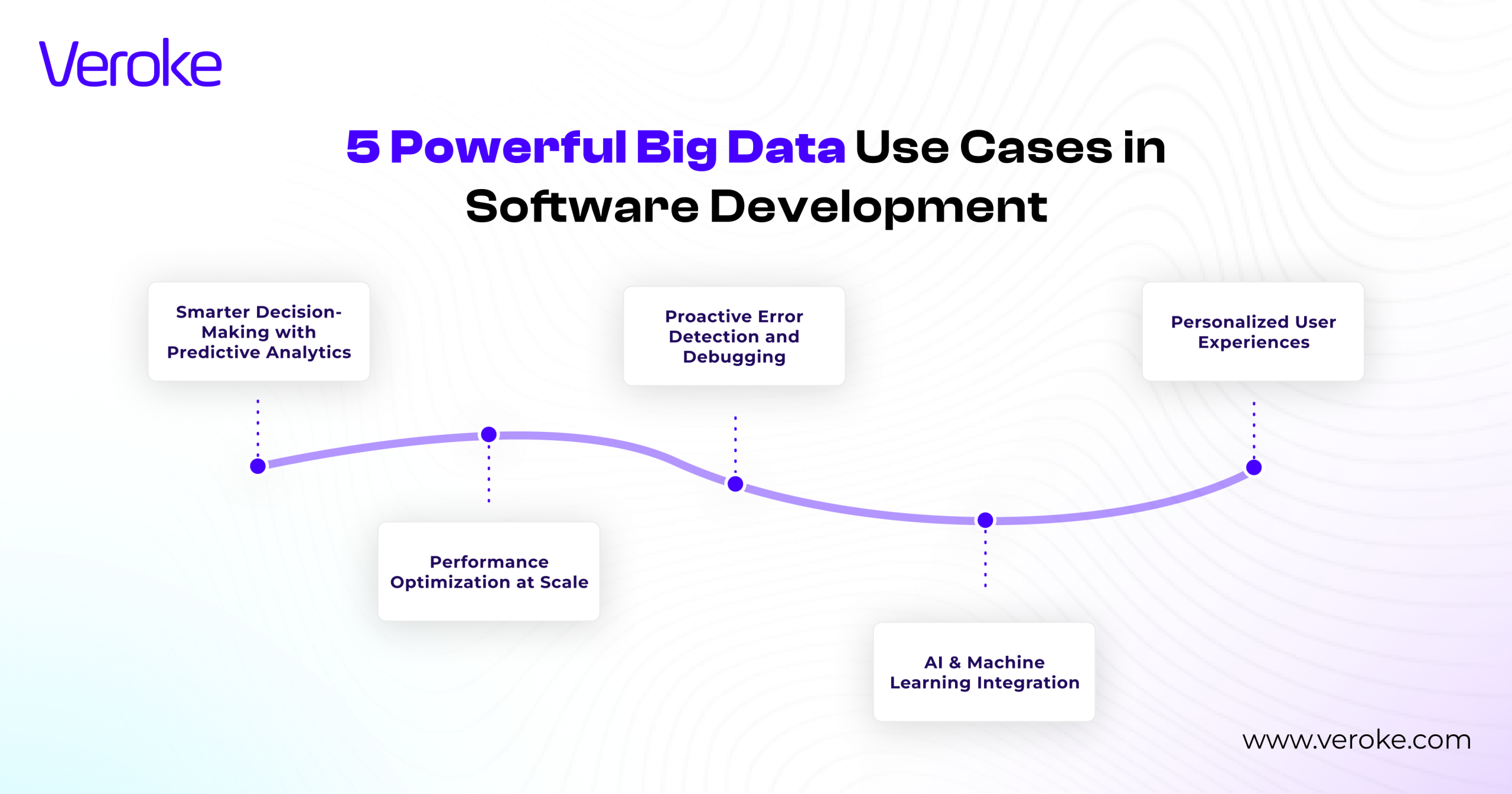
5 Key Big Data Use Cases for Software Development
4. Performance Optimization at Scale
As a software scales to serve global audiences, maintaining performance becomes a top priority. And here, data plays a key role by providing deep visibility into application behavior under varying conditions.
By continuously collecting and analyzing metrics related to app speed, server load, memory usage, and more, developers can detect performance bottlenecks early and fix them fast. This leads to smoother user experiences and stronger system reliability.
Take Uber, for instance, they use real-time data streams to optimize driver-rider matching, route calculation, and dynamic pricing. For developers, these insights mean less guesswork and more efficiency when handling complex, distributed systems.
5. AI & Machine Learning Integration
Artificial intelligence is revolutionizing software, and Big Data is what makes it possible. From chatbots to fraud detection to voice assistants, intelligent features require vast amounts of data to train, test, and improve algorithms.
It enables developers to incorporate AI and machine learning into applications in ways that were unimaginable just a few years ago. The more data a model has, the smarter it becomes, and the more value it delivers to users.
A great example is Google Assistant, which leverages massive datasets to understand natural language, predict user intent, and deliver accurate responses. By embedding AI for large scale analytics into apps, developers are building not just tools but intelligent systems that evolve.
Big Data in Action: Use Cases by Industry
While data is transforming software development from the inside out, its impact is even more visible across major industries.
Let’s step outside the software bubble for a moment to see how it is fueling transformation across industries, and why software companies must pay attention.
1. Fintech
In the financial sector, Big Data has become a cornerstone of trust and agility. Fintech companies process millions of transactions, user behaviors, and financial activities every day.
With the help of Big Data analytics, these businesses can identify and stop fraudulent activities in real time. Machine learning models trained on historical fraud patterns now detect anomalies, such as unusual transactions or login behaviors, before damage is done.
Beyond security, Big Data is helping fintech apps offer personalized financial insights. By analyzing spending habits and financial goals, platforms like Mint and Cleo can offer smart budgeting advice or investment tips tailored to individual users.
In risk management, banks and lending platforms assess creditworthiness using alternative data sources, such as online behavior and transaction trends, expanding financial access to more people.
2. Healthcare
One of the key trends in healthcare sector is predictive analytics. From electronic health records (EHRs) to wearable devices and genetic data, the industry generates immense volumes of information every second.
Big Data is also central to remote patient monitoring. Wearables and IoT devices collect continuous streams of health data and transmit them to cloud-based systems.
These systems analyze trends in real time and alert physicians to anomalies, enabling proactive treatment for chronic conditions like diabetes or heart disease. On the administrative side, hospitals use Big Data to reduce wait times, manage staffing, and streamline workflows.
3. Marketing
Marketing has undergone a complete transformation thanks to Big Data. Brands no longer rely on guesswork to reach their audience.
Instead, they use customer data, browsing behavior, purchase history, and social media engagement to craft hyper-personalized experiences across channels.
E-commerce giants like Amazon are masters of using data to recommend products and content, driving both engagement and revenue. But even smaller businesses now use data to perform customer segmentation, identifying key audience groups and tailoring messaging that resonates with their interests and behaviors.
Not only that, with campaign optimization, real-time analytics help marketers monitor ad performance, A/B test landing pages, and fine-tune strategies on the fly.
4. Logistics & Supply Chain
When it comes to the logistics industry and supply chain management, Big Data enables a shift from reactive workflows to proactive, data-driven operations. Massive streams of data, from GPS tracking, traffic updates, and weather forecasts to inventory levels and order patterns, are continuously analyzed to optimize routing, fleet management, and warehouse operations.
This leads to faster deliveries, lower fuel consumption, and reduced operational costs, all while improving overall supply chain efficiency. It also powers more accurate demand forecasting by identifying purchasing trends and seasonal fluctuations, allowing companies to position inventory closer to demand centers.
Meanwhile, real-time monitoring through IoT sensors and automated tracking systems increases visibility across every stage of the supply chain. This ensures timely interventions when disruptions occur, strengthens risk management, and improves the reliability of delivery timelines.
Ready to Build Data-Driven Software That Performs?
Big Data is reshaping software development from the inside out. It empowers developers to build better, smarter, faster, and more intuitive applications.
From fintech and healthcare to marketing and beyond, Big Data is not just changing how industries operate, it’s changing how they innovate, connect, and grow. For software development companies working across these sectors, understanding and leveraging these use cases is key to delivering high-impact, future-ready solutions.
For forward-thinking development teams, embracing Big Data isn’t just about keeping up, it’s about staying ahead.
At Veroke, we help startups and enterprises harness the full potential of Big Data in their software solutions. Whether you’re integrating AI, scaling your platform, or looking to personalize user experiences, our expert development teams have you covered.
Let’s talk about your next big idea. Contact us today and discover how Veroke can turn your data into your biggest competitive advantage.
FAQs
1. How is big data used in software development?
Big Data enables the collection and real-time analysis of data points, allowing teams to adapt swiftly and stay ahead of the competition. These insights help streamline the planning, development, and rollout of new products, features, and updates.
2. What are some common use cases for big data?
Big Data analytics is applied across diverse industries like healthcare, finance, retail, manufacturing, telecom, and transportation. It supports use cases such as predictive maintenance, fraud detection, customer insights, supply chain optimization, and risk management.
3. Where can big data be used, what are its real world applications?
Industries leveraging Big Data include healthcare, finance, retail, logistics, manufacturing, education, hospitality, marketing, media, and government. Common use cases range from real-time monitoring and customer personalization to improving efficiency, managing risks, and enabling predictive maintenance.
Transform your Ideas into a Digital Reality
Get customized bespoke
solutions for your business.

